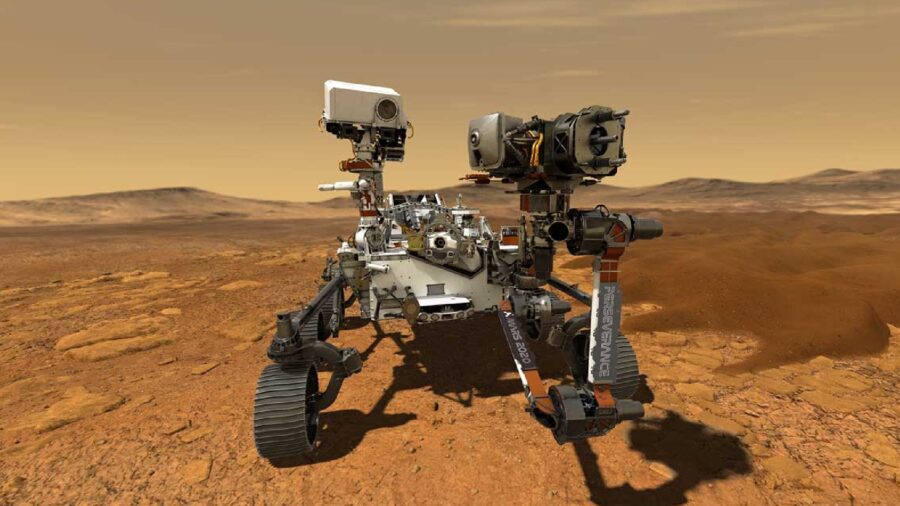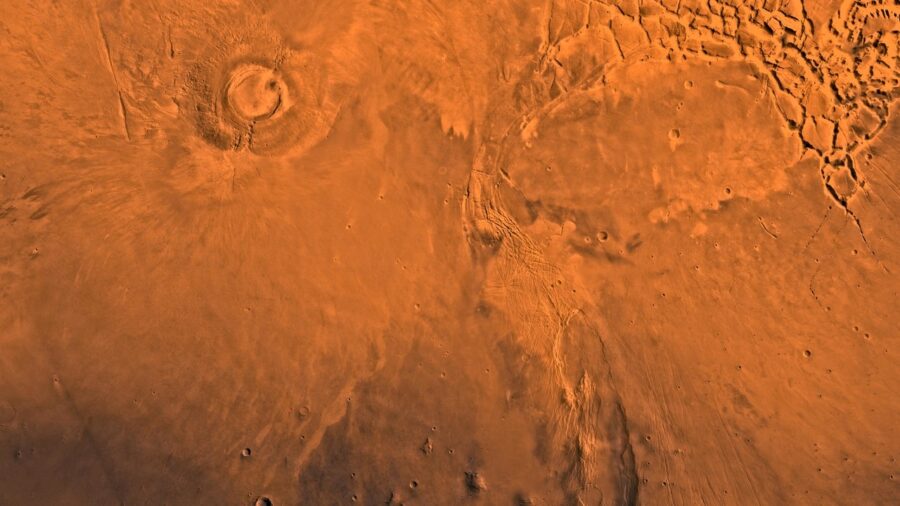NASA Perseverance Rover Makes Game-Changing Discovery On Mars

NASA’s Perseverance Rover recently collected a rock core sample that could significantly reshape our understanding of Mars. This sample, named Cheyava Falls, has intriguing characteristics that may help answer David Bowie’s famous question: Is there life on Mars?
The Sample Was Found In A River Valley

The Perseverance Rover, tasked with exploring Mar’s surface, retrieved this rock core on July 21. It was the Rover’s 22nd sample and was taken from the northern edge of Mars’ Neretva Vallis, an ancient river valley that was sculpted by water flowing into the Jezero Crater. This location is significant because it might have once been a habitable environment.
In 2008, NASA’s Phoenix Mars lander confirmed the presence of water ice on Mars, leading scientists to speculate about the potential for past life on the planet.
Fossils On Mars

The Cheyava Falls rock has drawn considerable interest due to its unusual chemical signatures and structural features. The rock displays distinctive leopard-like spots and vein markings that initially caught the attention of the research team. These markings are particularly intriguing because they resemble features found in fossilized records of microbes on Earth.
David Flannery, an astrobiologist from the Queensland University of Technology in Australia and a member of the Perseverance rover’s science team, explained, “These spots are a big surprise. On Earth, such features in rocks are often linked to fossilized records of microbes that once lived in subsurface environments.”
Hunting Microbial Life

Researchers are conducting in-depth analyses to determine whether the features of Cheyava Falls could be attributed to ancient microbial life or if there are alternative explanations. One key aspect of their investigation is the presence of millimeter-sized crystals of olivine, a mineral formed from magma.
The rock also contains sulfate, another mineral of interest. The high temperatures that introduced these minerals might have caused abiotic chemical reactions that could account for the rock’s distinctive leopard spots.
The Perseverance Rover’s mission is primarily focused on finding evidence of ancient microbial life. The discovery of Cheyava Falls, with its potential indicators of past life, suggests that the mission is achieving its objectives and even surpassing expectations. The Rover’s findings contribute to our understanding of Mars’ geological history and its potential to have supported life.
The Artemis Program

The Perseverance rover mission is part of NASA’s broader Moon to Mars program, which includes the Artemis missions. The Artemis program aims to return humans to the Moon and use it as a stepping stone for future Mars exploration. The data collected by Perseverance will play a crucial role in preparing for future missions to the Red Planet.
The Mystery Of Mars

As researchers continue to analyze the Cheyava Falls rock, the potential for discovering evidence of ancient life on Mars remains a compelling and exciting possibility. The rock’s unique features may offer new insights into Mars’ past environmental conditions and its capacity to harbor life. This ongoing investigation highlights the importance of the Perseverance rover mission in unraveling the mysteries of Mars and advancing our knowledge of the Red Planet.
The implications of these findings could be profound, not only in terms of understanding Mars’ history but also in the broader context of the search for life beyond Earth. The Perseverance mission, with its focus on collecting and analyzing samples, represents a significant step forward in our quest to answer fundamental questions about the existence of life elsewhere in the solar system.












